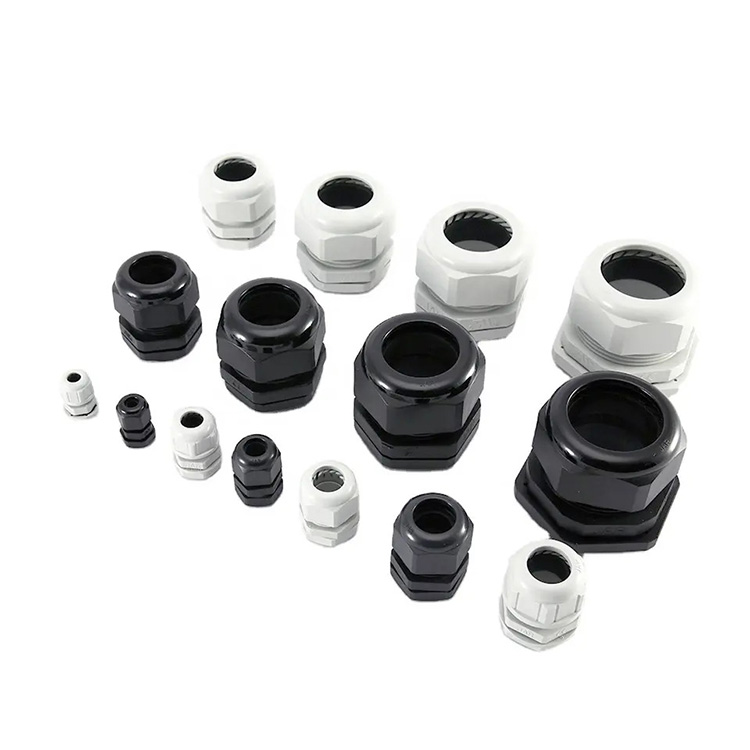How do Cable Glands Solve Traditional Cable Sealing Problems and Meet Line Safety Needs Across Industries?
2025-09-24
In scenarios such as power transmission, communication networking, and industrial equipment wiring, the protection of cable connection points is crucial to ensuring system stability. Traditional sealing methods often face problems such as "water ingress and short circuit, specification mismatch, and easy aging." However, cable glands—with their targeted structural and material designs—have become the core accessory to address these pain points. Their four core features precisely meet the high requirements for line safety across various industries.

1. Precise Sealing Protection: Blocking Harsh Intrusions to Safeguard Safety
The most critical pain point in cable connections is external intrusion. Waterproof connectors offer precise protection through a multi-layer sealing structure:
The built-in rubber seal tightly fits cables of varying diameters, forming a primary barrier against water and dust. Even in rainy or dusty outdoor environments (such as streetlight wiring and outdoor communication base stations), it effectively prevents moisture and dust from entering the equipment, preventing short circuits and poor connections.
For specialized applications like chemical plants and underground pipelines, some waterproof connectors are made of oil- and corrosion-resistant materials to resist corrosion from oil and corrosive gases, ensuring long-term cleanliness and stability of the connection point.
2. Full-Scenario Compatibility: Flexible Adaptation to Reduce Selection Troubles
Cables in different industries vary greatly in diameter, material (e.g., single-core, multi-core, flat cables), and installation environments. Cable glands achieve compatibility through "adjustable + modular" designs:
For circular cables, the tightness of the sealing ring can be adjusted by tightening the gland nut, eliminating the need for custom manufacturing for different specifications.
For flat cables or multi-core cables, split-type cable glands can be disassembled to wrap around the cable before reassembly, adapting to scenarios like smart home wiring and industrial equipment wiring.
Meanwhile, they are compatible with multiple installation environments such as walls, cabinets, and pipes—no additional modification to installation positions is required, significantly reducing the selection and inventory pressure for enterprises.
3. Long-Term Durability: Withstanding Harsh Conditions to Lower Maintenance Costs
Cable glands need to withstand environmental challenges for extended periods, making their "weather-resistant and durable" characteristics particularly critical:
Made of aging-resistant rubber and high-strength engineering plastics, they can tolerate high and low temperature fluctuations from -30℃ to 80℃. They are less likely to crack or harden in outdoor environments with intense sunlight or frigid regions (e.g., power transmission lines in northern China during winter).
For vibration-prone environments like factory workshops and new energy stations, the impact-resistant design of the housing reduces damage to connection points from external forces, preventing seal failure.
Even with long-term use, the sealing performance degrades slowly, eliminating the need for frequent replacements and significantly reducing long-term maintenance costs.
4. Lightweight & Easy Operation: Simplifying Construction to Improve Efficiency
During on-site construction and emergency repairs, "installation convenience" directly affects efficiency. Cable glands feature a lightweight design, weighing only 1/3 of traditional metal seals, making transportation and installation more labor-saving:
Most products adopt a threaded connection or snap-on structure, requiring no specialized welding tools. Construction workers can complete installation with ordinary wrenches, greatly shortening cable threading time.
Some cable glands support repeated disassembly, allowing flexible assembly and disassembly during equipment debugging and line modification, avoiding construction delays caused by re-sealing.
| Core Features | Pain Points Addressed | Typical Application Scenarios |
|---|---|---|
| Precise Sealing Protection | Waterproof, dustproof, oil-resistant, corrosion-resistant | Outdoor communication base stations, chemical workshops, underground pipe networks |
| Full-Scenario Compatibility | Adapts to multi-specification cables & installation environments | Smart home wiring, industrial equipment wiring, new energy stations |
| Long-Term Durability | Resists high/low temperatures, vibration, and aging | Power transmission lines in northern China, factory workshops, outdoor street lamps |
| Lightweight & Easy Operation | Simplifies construction, supports repeated disassembly | Emergency repairs, equipment debugging, on-site wiring |
Now, cable glands are evolving toward "functional upgrades":
Some products integrate grounding protection functions to make electrical safety even better.
Cable glands made of recyclable and environmentally friendly materials are gradually becoming popular. This fits the trend of green production.
Also, some brands are trying to add intelligent monitoring modules. These modules can give real-time feedback on sealing status and support data-driven line maintenance.
As the "safety guardian" for cable connections, the four core features of cable glands will keep providing protection for industries like power, communications, and new energy. This helps line systems work more stably and efficiently.


























